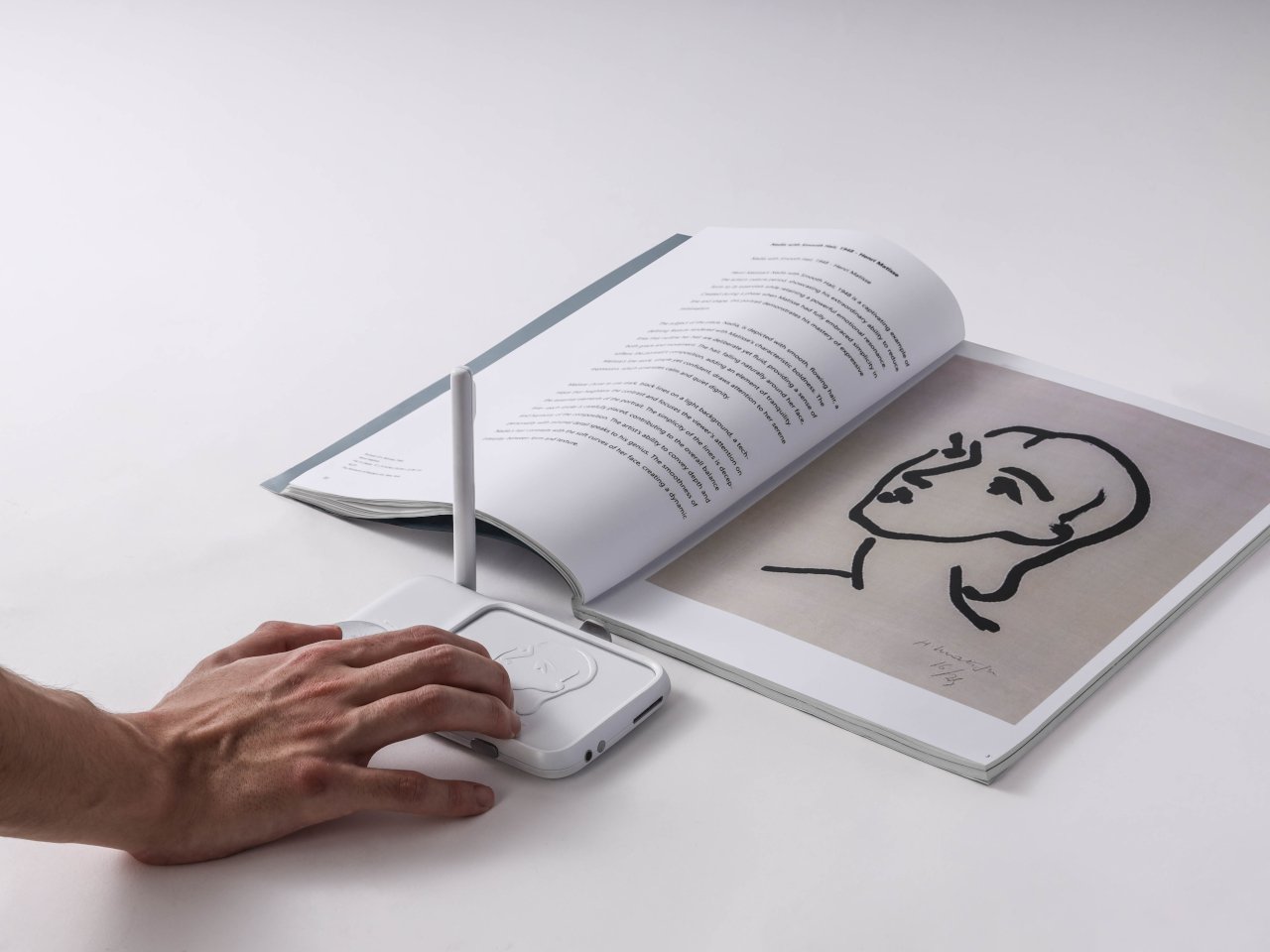Reading remains one of humanity’s most fundamental activities, yet millions of visually impaired people face significant barriers when trying to access books, magazines, or educational materials that rely heavily on visual content. Current solutions like audiobooks handle text well but completely miss images, diagrams, and visual elements that often carry crucial information. E-readers with Braille displays exist but remain expensive, limited, and unable to convey the rich visual content that makes many books complete experiences.
The Feel Book concept by Young Jin Jeong and Dong il Lee tackles these limitations through a visionary approach that imagines what reading could become with advanced AI and tactile technology. This speculative device proposes a future where both text and images become accessible through a combination of intelligent recognition, audio feedback, and revolutionary tactile display technology that doesn’t yet exist in practical form.
Designers: Young Jin Jeong, Dong il Lee
The design philosophy centers on thoughtful simplicity and seamless integration into everyday life. Feel Book features a minimalist, portable form that’s designed to be easy to perceive through touch, with spatial harmony ensuring all controls fall naturally under the user’s fingers. The device is intended to blend into any environment, supporting reading anywhere without drawing attention to the user’s visual impairment.
The AI camera system represents the concept’s most achievable element with current technology. The device would scan physical book pages, using artificial intelligence to recognize both text and images in real time. The text gets converted to speech, providing clear audio narration that follows along as users turn pages, creating a natural reading rhythm that mimics sighted reading experiences.
The revolutionary aspect lies in the proposed tactile image display. As the AI camera detects illustrations, photographs, or diagrams, the concept envisions rendering these images as touchable graphics on the device’s surface. Users could feel the outlines of characters, explore the shapes of diagrams, or understand the composition of photographs through their fingertips, creating a truly multisensory reading experience.
Of course, this tactile image rendering remains firmly in the realm of speculation. Current technology can’t dynamically create detailed, real-time tactile graphics with the resolution and speed this concept would require. Existing tactile displays are limited, expensive, and nowhere near the sophistication needed to translate complex images into meaningful touch experiences.
That said, the concept’s value lies in pushing boundaries and inspiring new thinking about accessibility. By imagining what’s possible rather than accepting what’s practical, Feel Book challenges designers and technologists to develop solutions that seemed impossible just a few years ago. The concept serves as a north star for inclusive design, showing what we should be working toward.
You’ll notice how Feel Book embodies the principle that accessibility drives innovation for everyone. The tactile clarity, spatial harmony, and intuitive navigation would benefit all users, not just those with visual impairments, suggesting that inclusive design often creates better experiences across the board.
The Feel Book concept invites us to imagine a future where reading becomes truly universal, where every book becomes accessible regardless of visual ability. This kind of speculative thinking helps expand our understanding of what technology should accomplish and inspires the innovations that might eventually make such visions a reality.
The post Feel Book Concept Imagines a Tactile, AI-Powered Future for Accessible Reading first appeared on Yanko Design.

